After finishing a three-day Adventure Tours trip that visited Alice Springs, Kata Tjuta, Uluru and Kings Canyon, we were back in Alice Springs, getting up before dawn to meet our new guide, JB, at the lobby of our hostel.
JB is what you’d call a quintessential Aussie – in his mid-60s, he was still going strong, with a friendly nature, a laidback attitude, and a typical mumbling drawl that meant that tourists can oftentimes not completely understand what he was saying. He seemed genuinely interested to know where the 20-odd people on our tour had come from, what they did for a job, and what their interests were, spending time chatting to us around the table after dinner on our first night to ask lots of questions. I liked him immediately.
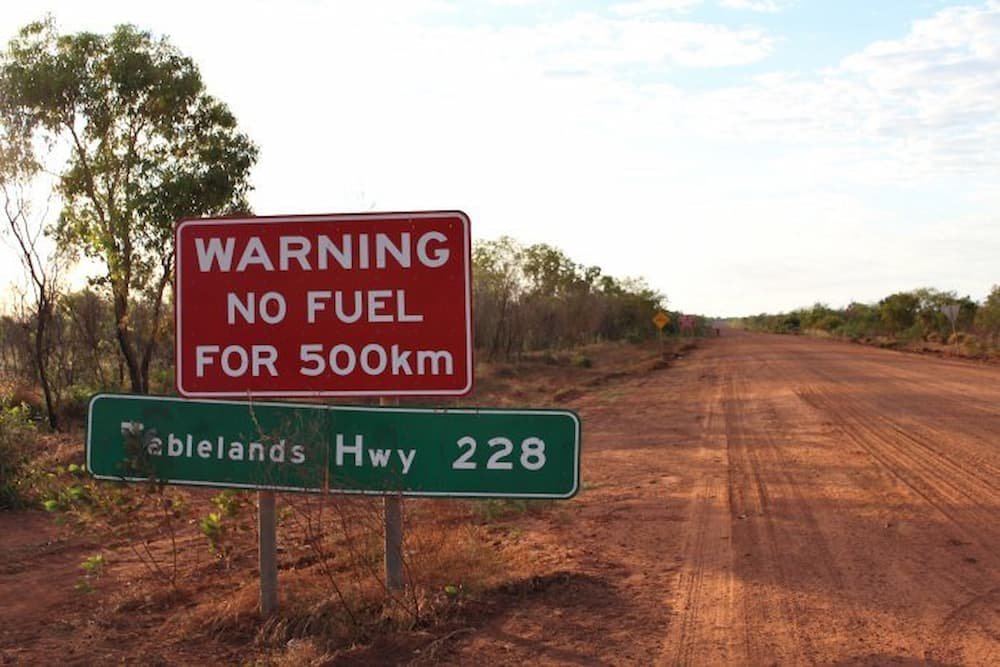
Our first stop was through the Tropic of Capricorn, which sounds quite exciting, except that besides one sign that tells you that you’re passing by, there’s nothing else around. There’s no line through the dirt, there’s no fanfare about it. Plus it was incredibly dark so the photos were just as underwhelming.
Driving on, we were reminded about how remote we were with a store that sold its goods for double the price of other major Australian cities, as well as a couple of statues of a male/female lizard (very cute) and an Aboriginal woman touting a spear (very massive). The next signs of life come via a gas station that markets itself as the most remote in Australia. “Road trains” – essentially gigantic trucks toting up to five loads of cargo (groceries, cattle, etc) behind them – were our road neighbors as we continued to make our way north.
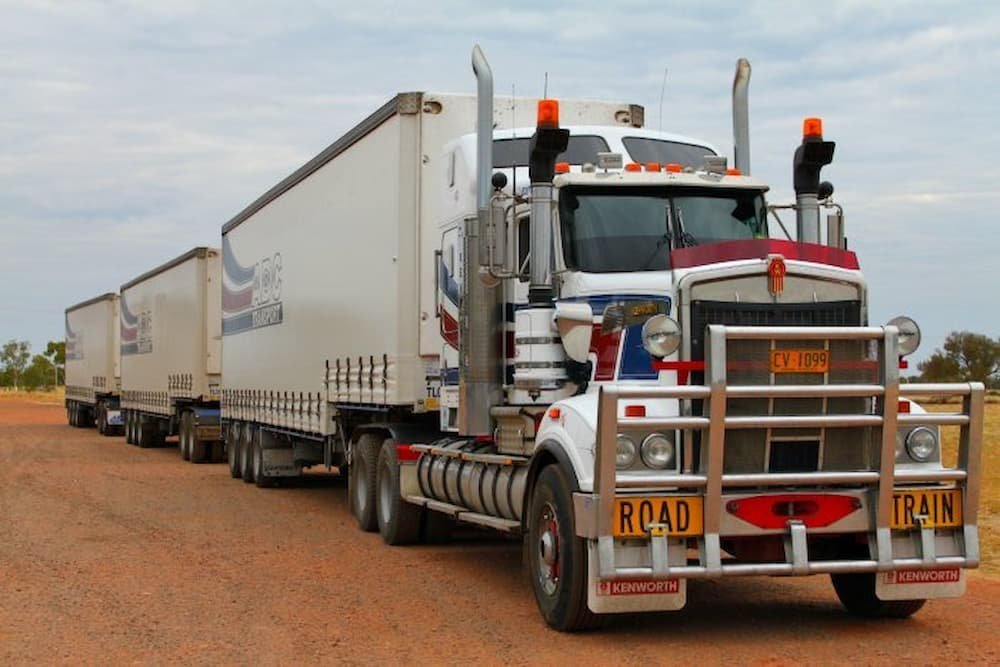
Lunchtime was at Wycliffe Well – the UFO capital of Australia, thanks to it having the most UFO sightings. The people that run the one little park/hotel/store/petrol station in the area have completely capitalized on this – there’s a little museum, as well as plenty of posters, including signs for the “malien” and “femalien” toilets (geddit)? There’s also a mini-farm housing a number of Aussie native fauna, including some very territorial emus guarding their eggs.


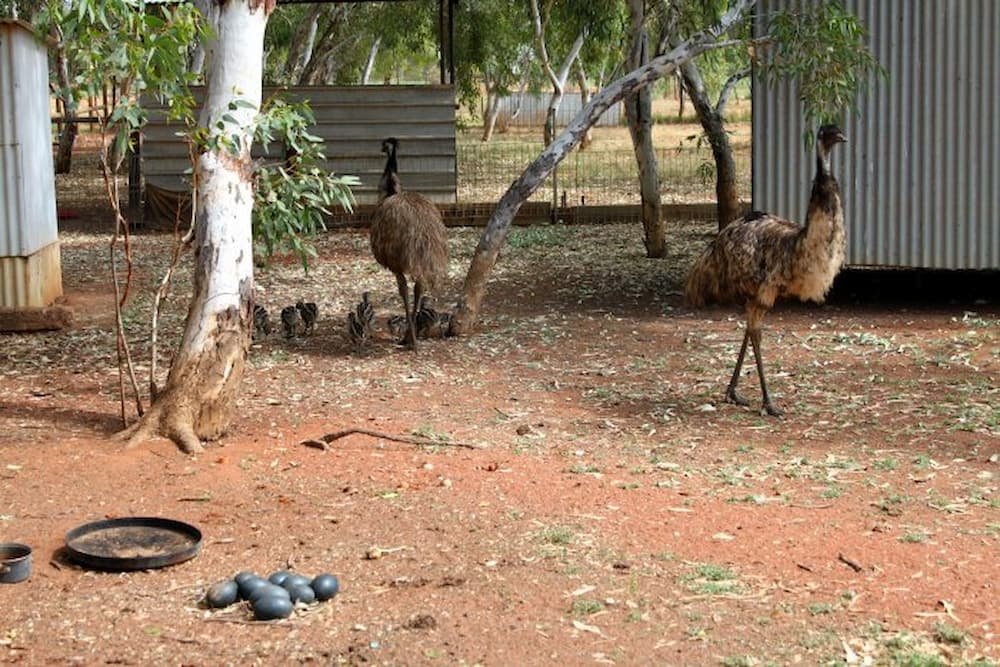
The main attraction for the day was the Devil's Marbles, a site sacred to its traditional Aboriginal owners. A deep brown color, there were literally dozens of huge boulders scattered across the flat plains. There were some boulders that showed clear signs of erosion – one looked like a massive salami, it had been sliced cleanly in half, exposing its white flesh underneath, while others were chipping in places. I felt like a kid again, clambering over piles of rocks to get the best shots.
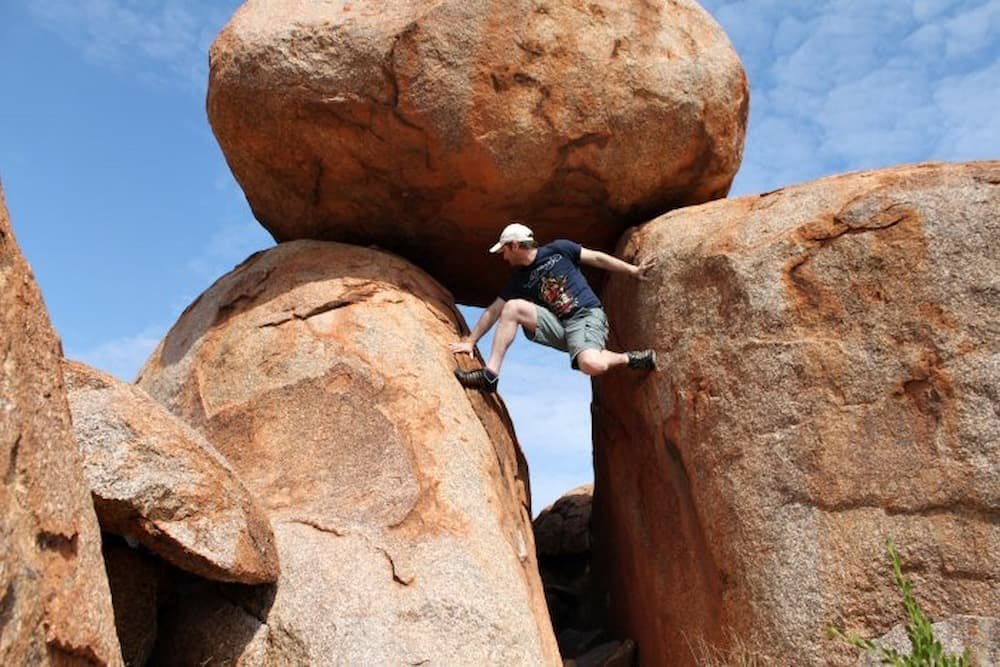
Besides these boulders, what also litters the landscape is the numerous termite mounds – this was the start of the millions more we would see as we went up to Darwin. Scaling up to a whopping eight meters in height and lasting up to 80 years, the mounds are hard as rock and made by termites gathering the surrounding dirt and spitting it out to create a hill that other animals can live in and birds can perch on, so they’re great for the ecosystem. They were amazing – some were stout, some had pointy tips, some were red and some were almost green/grey thanks to the color of the dirt that we went past.

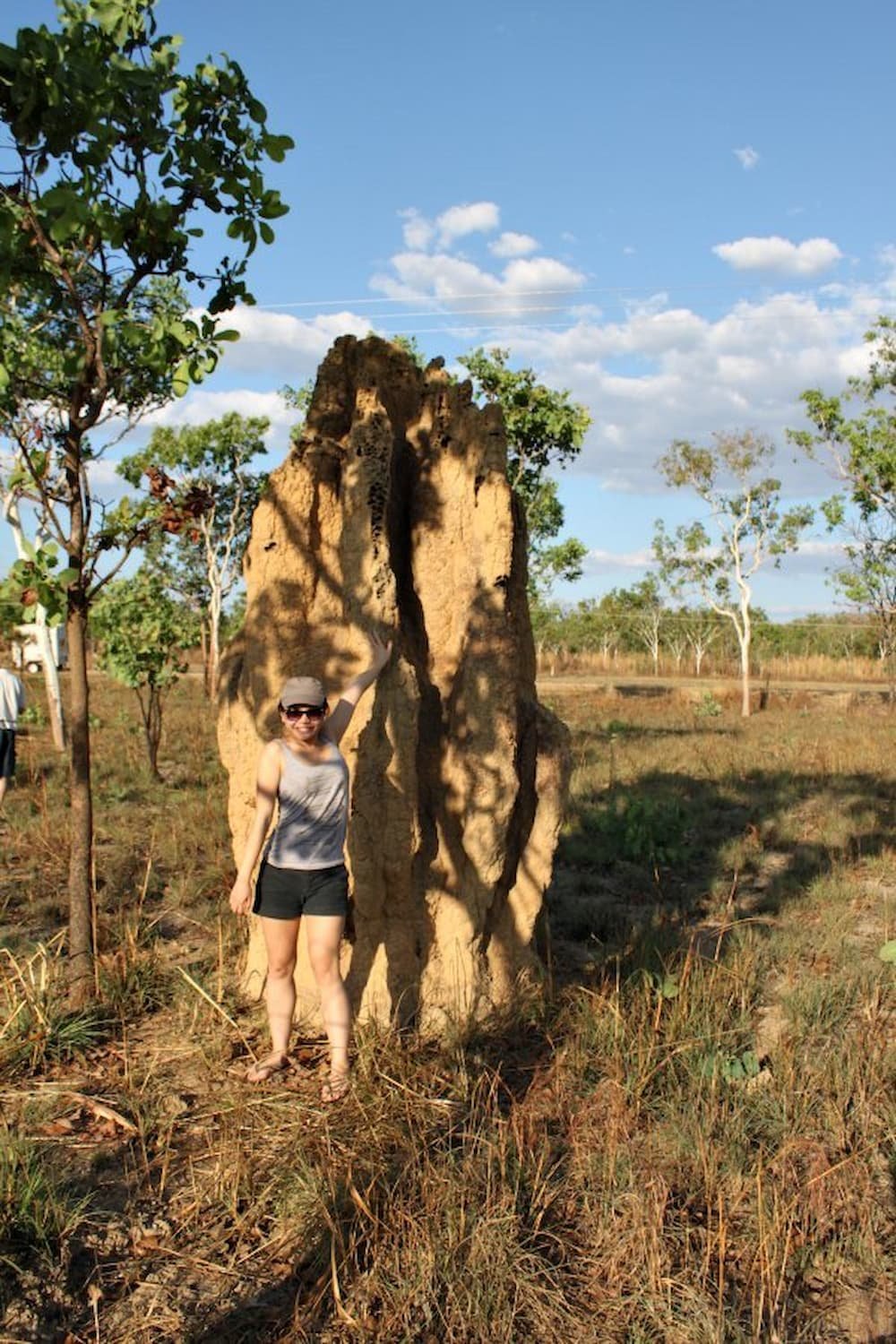
If Alice Springs is remote, the town of Tennant Creek just up from the Devil's Marbles is even more so. Sadly, the town’s liquor store is arguably the most popular shop for its residents. The Northern Territory has six times the alcohol consumption compared with other states in Australia, and the problem is so acute that there is a two-hour timeframe to buy cask wine (4-6 pm), while ID is scanned with every alcohol purchase. Getting to our campsite, we walked up a hill and looked out at the scenery – with the occasional road train and car driving past into the distance, we truly were in the middle of nowhere. Welcome to hot, dry, red, remote outback Australia.
If you ever want a sample of the quintessential Aussie humor, look no further (but do travel far) to Daly Waters Pub, an outback roadhouse for travelers from all corners of the globe. For example, next to the pub is a traffic light permanently on red (apparently a tourist waited there for about 15 minutes with no other cars in sight before catching on). Meanwhile, the store next to the pub sells various necklaces and other bric-a-brac, greeting you with signs like “The burglars (sic – burgers) are better at Hungry Jack’s”, “Next McDonalds – 285km” and a helicopter perched precariously on the roof above.
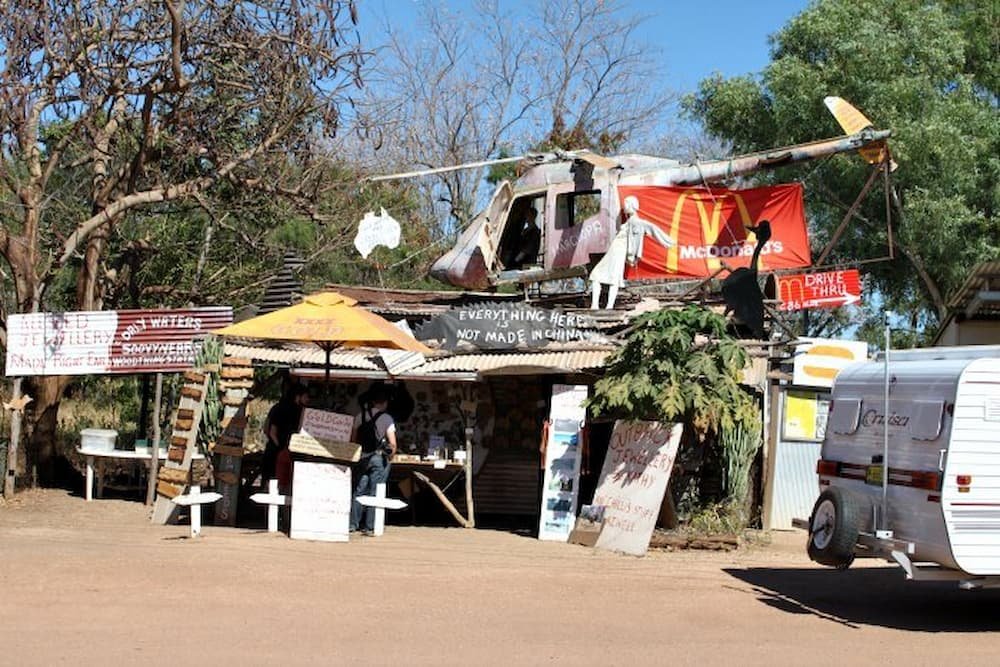
Going inside the pub, you can spend ages checking out all the memorabilia of travelers before you – people have left copies of their IDs, jerseys and even bras and underwear hanging from every corner of the room.
Driving on to Mataranka, right in the heart of the “never never”, people can come and soak in the thermal springs that are about body temperature in warmth. The springs are not very big though, so in peak season be prepared to be rubbing shoulders and feet with other people keen to take a dip – not particularly relaxing. You can walk around (about 1.2 kilometers) and see if you can spot any native wildlife like crocodiles or kangaroos, but other the walk is not particularly enthralling.


Arriving at our campsite before dark, fortunately, we had gathered more than enough firewood to compensate for the previous night, managing to dump all the wood to create a substantial bonfire. The heat was starting to pick up too – our permanent tents were sweltering and a few of our fellow friends were rather spooked by fairly large Aussie spiders lurking about. There was also a green tree frog stuck in a tap pipe in the men’s toilets – sadly, after rescuing the creature he leaped outside to freedom, only to be found shriveled to a crisp by the hot sun at noon the next day..!


The next morning we had a sleep-in, not needing to depart until the late time of 6.30 am (woohoo!). Our stop was Katherine Gorge, where we could choose to walk, kayak ($30 for double, $45 for single), or go on a cruise ($60) down the spectacular waters. Despite the heat, you wouldn’t really want to go for a swim right by the shore – the trees nearby were completely infiltrated with bats (there were so many that they looked like brown leaves shaking in the wind), and the area was filled with the aroma of bat droppings.
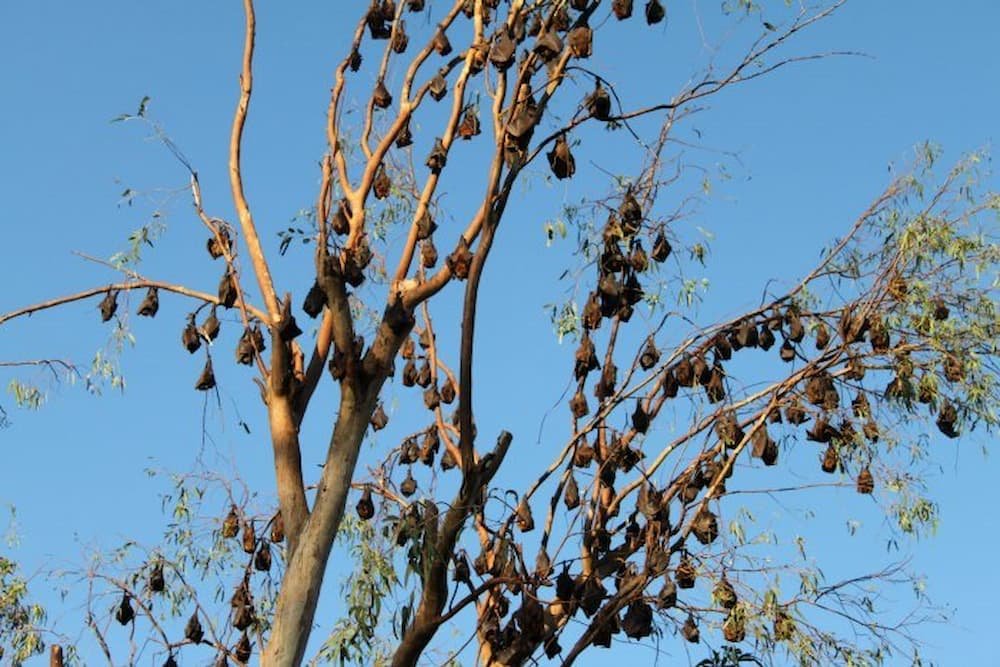
Michael and I shared a kayak and paddled down to the first gorge (there are three) – this takes about 2.5 hours return, including time to go for a walk and sunbathe up to the rock face dropping down to the water below once you’ve reached the gorge. I’ve only been three times but I absolutely love kayaking – even though after a few hours my arms feel like jelly and I try not to think about each stroke so that I can keep on going. One thing that eludes me though is how to kayak and not finish completely saturated as I wind up splashing myself with every stroke. Is it possible to be dry the entire time?

The gorge is awesome – it’s fairly wide (but you’re told to keep to the right at all times so that boats can cruise easily past you in both directions), and you can see crocodile traps (we didn’t see any crocs stuck in them though – not sure if that was a good or bad thing), small waterfalls and an eerie little cave. The weather was perfect – warm sun and a blue, cloudless sky. We also had another chance to take a dip at the next stop – Edith Falls, a fairly rapid but small waterfall. It’s a 500-meter swim to get to the gushing falls. It’s a picturesque little spot, nice for a quick dip.

While the landscape of hot, outback Australia doesn’t vary too much, two major features continued to strike us – the first was the thousands of termite mounds that we continued to pass (it became a game to point out really tall or particularly interesting mounds to note while on the bus – the number of mounds in the Northern Territory surely outnumbers the Australian population), while the second was the amount of “back-burning” that was going on in the outback. In order to curb the spread of massive bushfires, the practice of pre-empting this in summer by purposely burning the dry grass in a contained area is common throughout Australia. Apparently, a practice conducted by the Aborigines before European settlement, it’s not an uncommon sight to see the skies being colored by lots of black smoke as back-burning is done in the distance.
Arriving in Darwin, we checked into our hostel, Frogs Hollow, separately to the majority of our tour, who were all staying in Cavanagh Hostel as they were continuing on for the next few days to Kakadu (we were going to Bali the next day instead).
I would have willingly eaten a cane toad to have stayed in Cavanagh instead of the skanky hole we slept in, otherwise known as a double hostel room. I could have put up with the loud, death metal music blaring downstairs. I could have put up with dirty showers that smelled like bad sex – even though they were right next to our room. But really, did I have to sleep on a bed that had sheets with mysterious, yellowed stains all over them, in a cramped room with mold all around it?
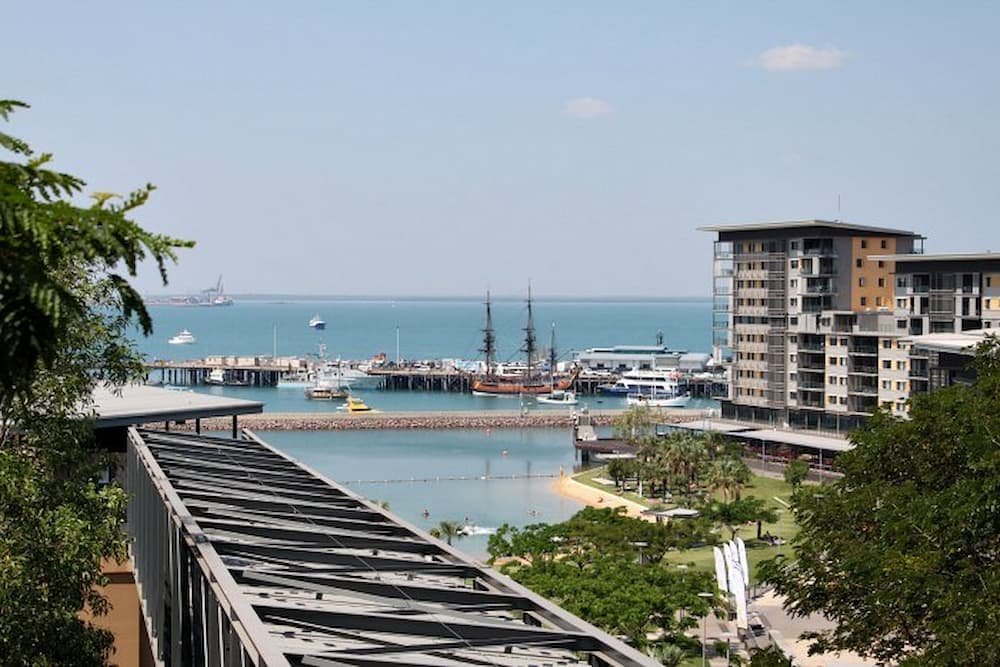
The day after our tour ended, we woke up from our hellhole (i.e. hostel), had a quick shower, and got the hell out of there. Starving, I made my way down to the communal kitchen to see if I could score some breakfast, but all I was greeted with were some crumbs, a few dirty knives, and not much else. So we wandered up to the city center and scored ourselves a fairly fancy breakfast to keep us going and to dust away the rest of the skankiest that we had just left behind. A swanky eggs benedict, toast, and coffee will do that to you.
While Darwin is by the coast of Australia, it doesn’t have the pristine beaches that the east coast is known for (e.g. Bondi, Manly, Four Mile Beach etc). It is pretty swanky by the coast though – there’s a swimming pool with a man-made ‘surfing’ area where you can perch atop a surfboard and see if you can withstand the ‘waves’, as well as some nice sandy and grassy areas to sunbathe upon. This area is flanked by a boardwalk, as well as some expensive-looking cafes, shops, and residential apartments and offices. If you’ve ever been to Darling Harbour in Sydney, it looks a bit like a smaller version of that. Surrounding this area, you can walk to some of the other main buildings in Darwin – check out some parliamentary offices and the like.

We decided to skip the latter though and make our way to Darwin’s museum. It’s about a 15-minute bus ride outside of the Woolworths shopping center behind Mitchell Street (the main street in Darwin) – catch bus number 4, you can buy your tickets on the bus.
The museum has some interesting exhibitions, including some fossils from the Northern Territory that are thousands of years old, stuffed native fauna (did you know that two-thirds of all snakes in Australia are deadly?), Aboriginal artwork, and a dedicated section to Cyclone Tracy. This cyclone hit Darwin on Christmas Eve just over 25 years ago and the whole city was completely flattened, so it’s amazing to realize that everything that you see in Darwin today is a result of them having to rebuild. There are some interesting aerial shots before/after the cyclone and even a dark room that you can go in to hear what the cyclone sounded like when it struck – people that experienced the ordeal won’t go into this room, it brings back too many bad memories.

Besides the museum, most of the sites in Darwin can be found within the city center. While it’s not a big city, the main street, Mitchell Street, really comes alive every night as casual pub-goers mingle with their more upmarket bar-hoppers on the strip. There’s also a melting pot of cuisines available, from Thai and Chinese to standard Aussie grub.

That's a great adventure you have there. I was laughing hard at the signs of the Daly Waters pub. I am planning to visit so I can take the family to an adventure in the Kakadu National Park. Except for the room, I hope to have a great family adventure in Kakadu.
Hey Sylvia thanks for the comment. You will have an amazing time. We had so much fun and really look forward to getting back there one day. Let us know how it goes.